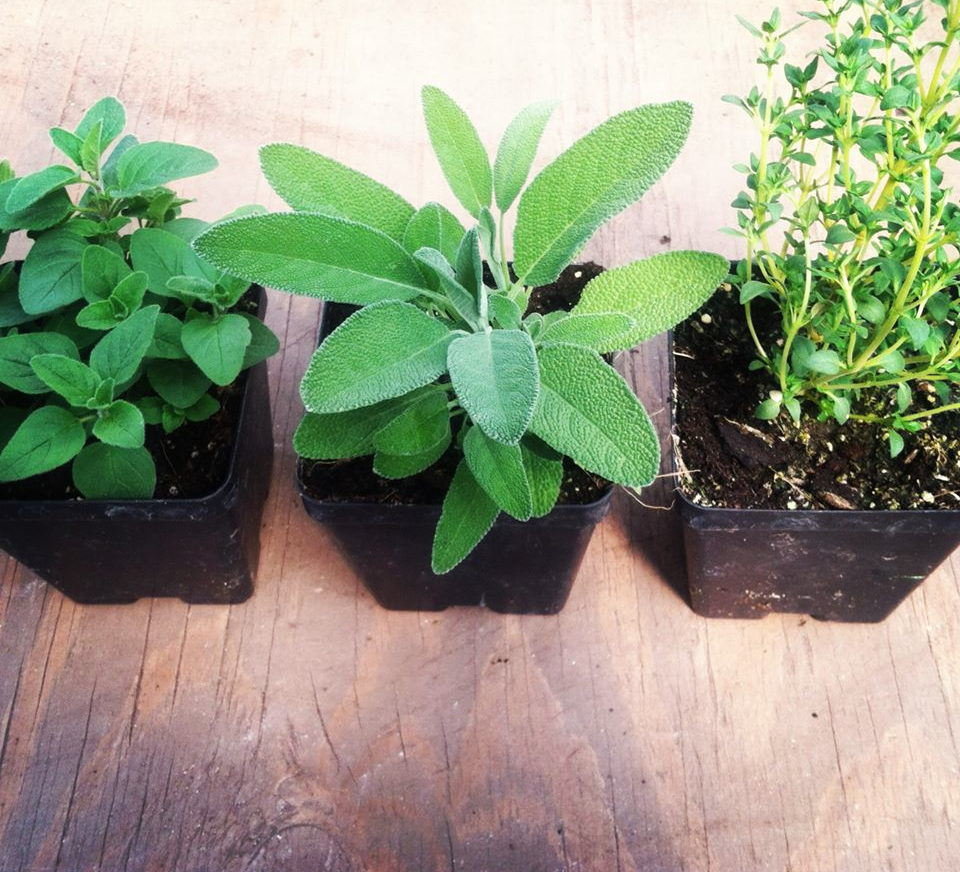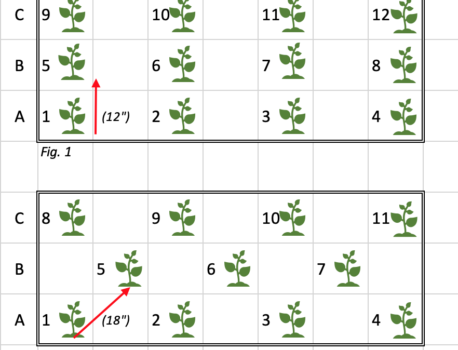1) Understand Expected Yields
Seed catalogs can be a wealth of information when it comes to planning. While seed catalogs provide you with valuable yield and planting information, they don’t always account for the following:
Yields vary by variety
Some varieties are bred specifically for their yield potential while others are selected for their physical characteristics or flavor. There are often trade-offs when one part of the genetic puzzle is enhanced. Let’s use medium-sized tomatoes as an example:
| Variety | New Girl | Black Prince | Taxi |
| Type | Hybrid | Open-pollenated | Open-pollenated |
| Days-to- Maturity | 62 | 74 | 64 |
| Yield | High | Low-Med | Med-High |
| Color | Red | Purple | Yellow |
| Flavor | Unremarkable | Smoky | Sweet/Low-acid |
| Texture | Juicy | Juicy | Sometimes Mealy |
| Shelf Life | Good | Moderate | Poor-Moderate |
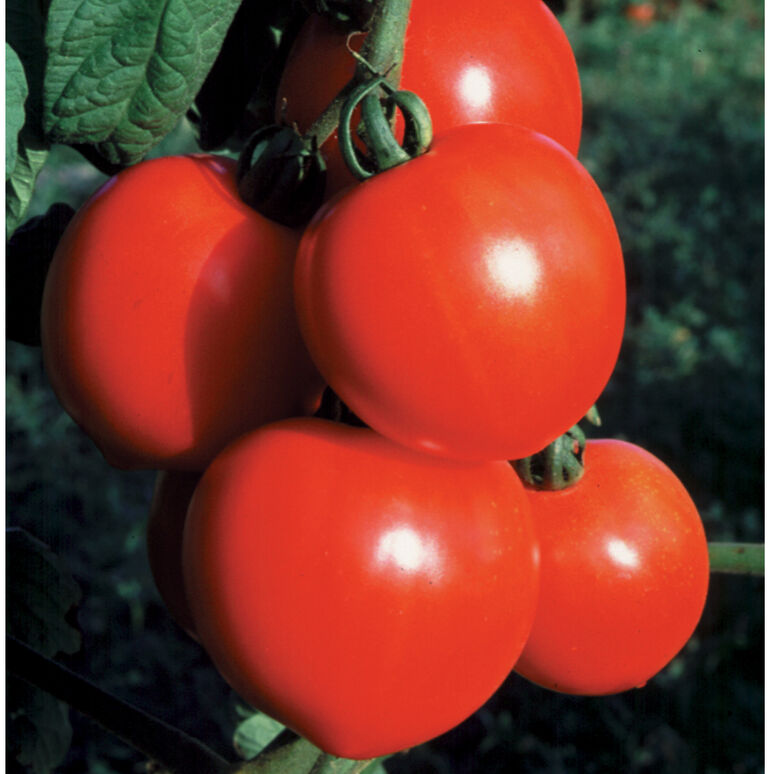 | 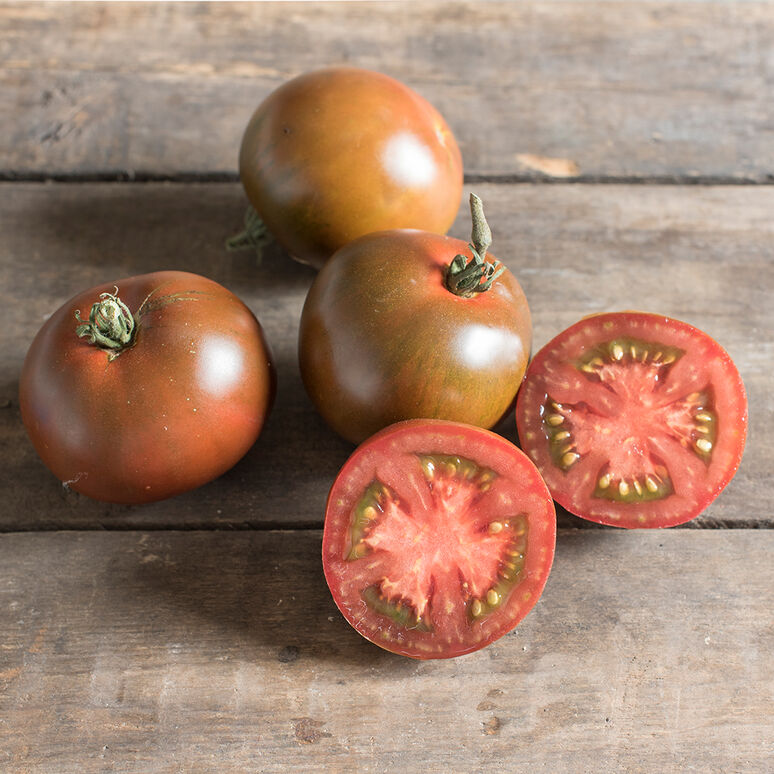 | 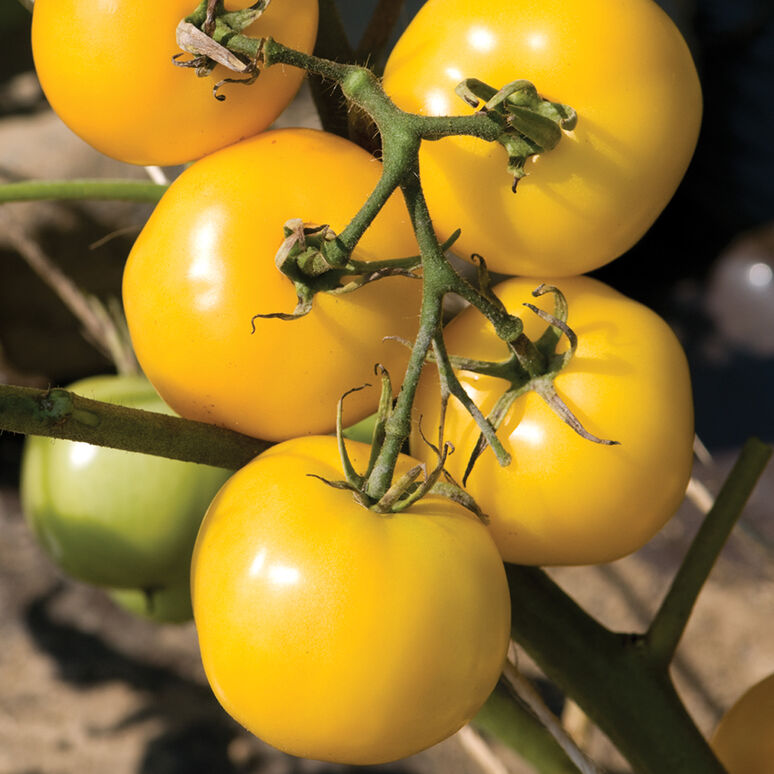 |
Because the industry standard for tomatoes has most people expecting perfectly round red (and often flavorless) slicers, breeders have generally focused their efforts on developing high yielding, shelf stable red hybrid tomato varieties. However, the world of tomato varieties is huge and the tradeoff of lower yields might be worth it in order to experience the unique flavors and colors that heirlooms can provide.
Soil health can impact yields
If you’re planting in a very rich spot compared to one with either unknown or poor soil health, your yields will be impacted significantly if you don’t provide adequate fertility throughout the season. What some people often don’t realize is that healthier plants have better resistance to pests and diseases which can significantly impact yields.
I recommend taking a soil test at the end of the growing season before the ground freezes or first thing in the spring once it has thawed. That will allow you to make adjustments to the soil prior to the planting season to increase your likelihood of success.
Consider keeping a harvest journal to record weights
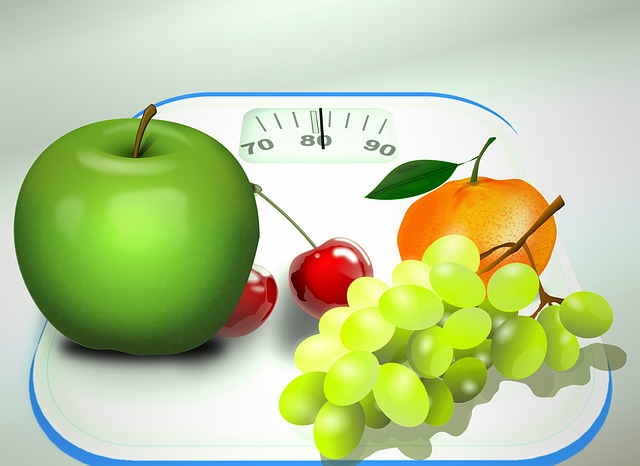
Taking weights can be done with relative ease with a typical bathroom scale. Simply weigh yourself and then weigh yourself again while holding your produce to determine how much it weighs. Keep averages over the course of your harvests. These figures will come in handy the next time you plan your garden as they’ll reflect the nuances of your personal space.
2) Make Sure Your Plant Spacing is Correct
People have a tendency to cram as many plants into a space as possible. This usually isn’t ideal as plants require more space than we often think to grow to their full potential.
For gardeners who don’t have much space, staggering your rows creates more space between plants. Figure 1 illustrates planting directly across from one another at 12” between-row spacing. Figure 2 shows that by staggering your rows you can gain significant space between plants, increasing their ability to grow larger and yield more. While you’re losing one plant to this arrangement, it is worth it because of how much larger the other plants can grow.
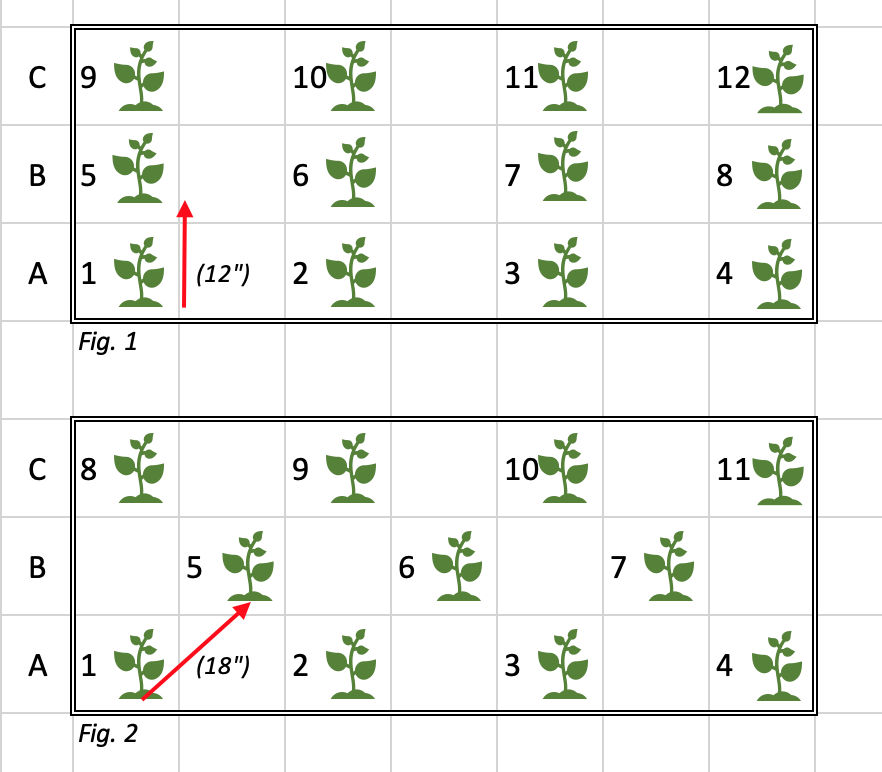
3) Plant a Buffer for Unexpected Crop Losses and Needs
I like to seed/plant about 30% more than I need in a season for most crops.
Some crops require larger buffers than others. For example, onions tend to have low gemination rates so I sometimes seed a 40-50% buffer (i.e., if I want 100 onion plants, I seed 150). These rates are usually found on your seed packet.
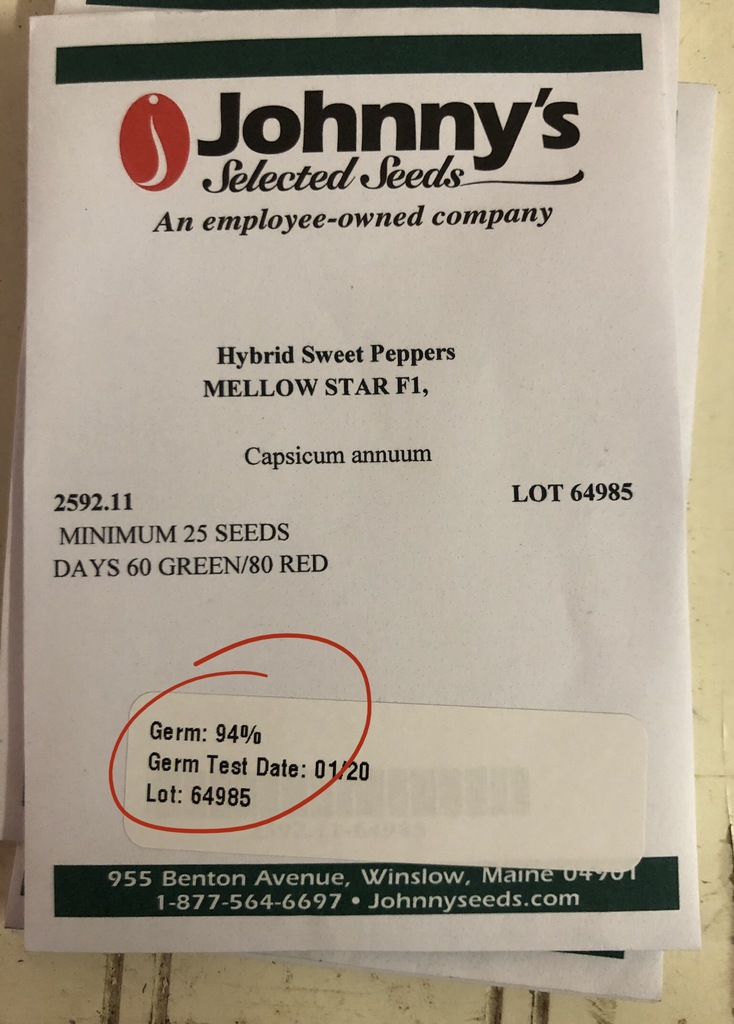
Germination rates decrease for all seeds over time, but especially for onions. I purchase new onion seeds each year and increase my buffer for other crops when planting older seeds for other crops.
If you’re planting in a new spot, you may want to increase your planting buffer as well as new spaces can be unpredictable.
4) Crop Diversity is Key
This concept is essential when growing food for survival or sale. Sometimes disease or pest issues can result in crop failure. Making sure you have a diversity of different crops as well as different varieties of a certain crop can help protect against this. Let’s use the tomato as an example again:
Say you go whole hog on tomatoes and fill half of your garden with them. Then you are hit with late blight (a fungal disease) which is nearly impossible to recover from. If you used 50% of your growing space for tomatoes you are SOL if they’re all wiped out.
Luckily, you were smart and planted one variety that was slightly resistant to late blight and fared better than the rest of your tomato plants. This accounted for 25% of your tomato crop (and 12.5% of your entire growing space).
Even still you likely would have been better off if you had planted a greater number of crops in the space allotted for tomatoes.
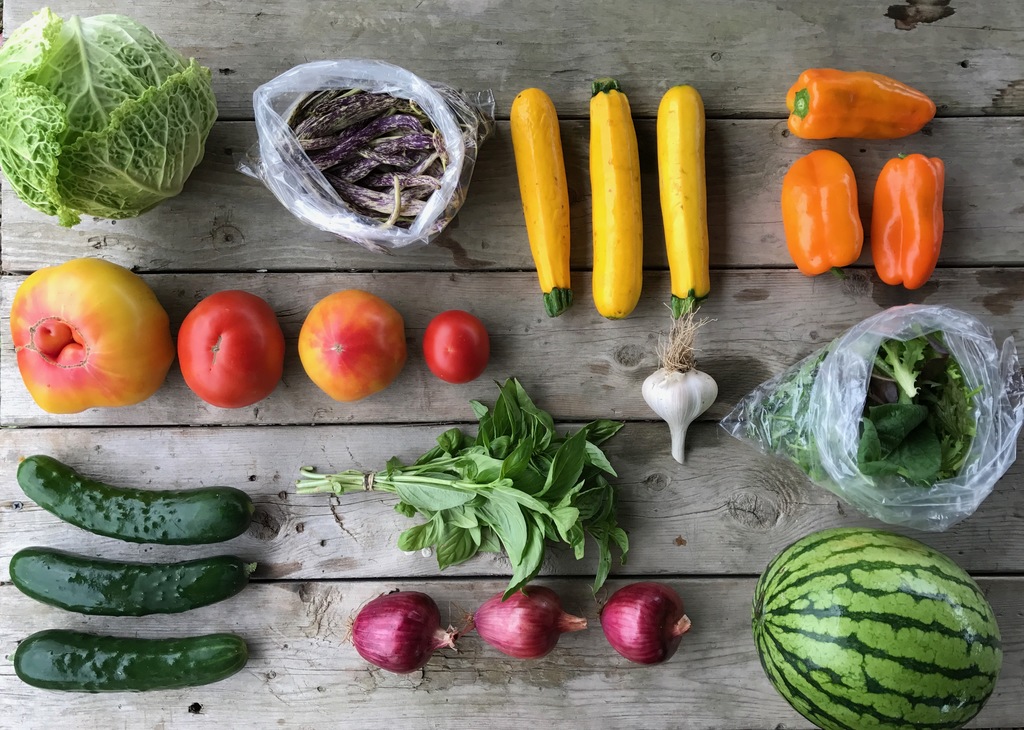
The takeaway: Not only is variety the spice of life, it also protects against ultimate destruction. (That’s a metaphor for life, if you ask me!)
5) Know What You Need for Fresh Eating vs. Storage
In addition to knowing what you typically eat in season you’ll want to consider what you consume of your typical storage vegetables. It’s important to understand not only how to grow them but also what the ideal storage conditions are and how long you can expect them to last.

